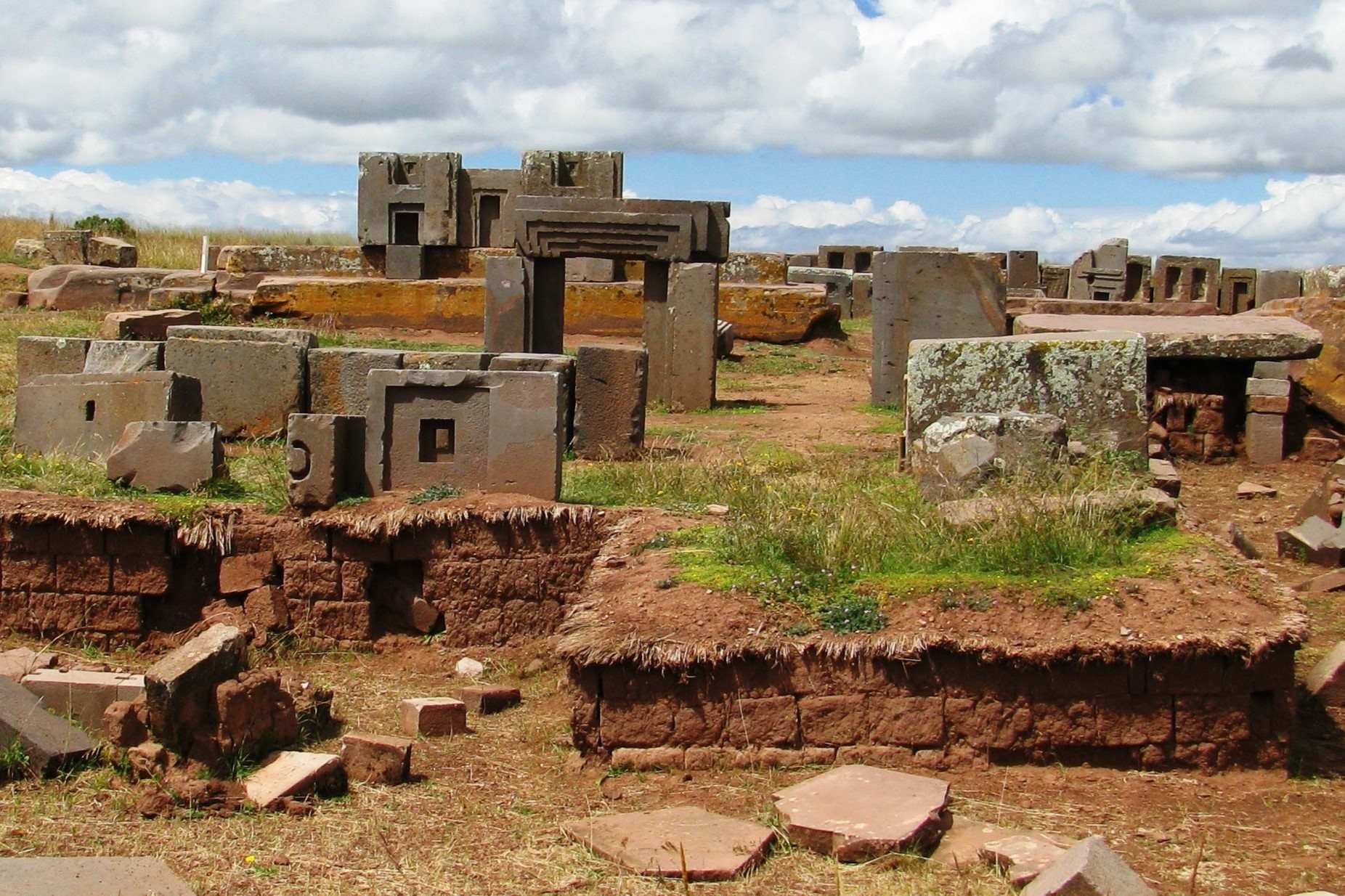
Pumapunku is one of the most mysterious archaeological sites in the world. Located in Bolivia, this ancient complex is part of the larger Tiwanaku site. What makes Pumapunku so intriguing? Its precisely cut stones and advanced engineering techniques baffle experts. Some blocks weigh over 100 tons, yet fit together with laser-like precision. How did ancient builders achieve such feats without modern tools? Many theories exist, but none fully explain the site's construction. Pumapunku challenges our understanding of ancient civilizations and their capabilities. Ready to dive into 37 fascinating facts about this enigmatic site? Let's get started!
Key Takeaways:
- Pumapunku, an ancient engineering marvel in Bolivia, continues to mystify with its precision stonework and enigmatic purpose, inspiring modern architecture and captivating tourists worldwide.
- The cultural significance and mysteries of Pumapunku, including its advanced construction techniques and alignment with cardinal points, make it a fascinating and thought-provoking destination for history enthusiasts and curious minds.
What is Pumapunku?
Pumapunku, part of the Tiwanaku archaeological site in Bolivia, is a marvel of ancient engineering. This site, which means "Door of the Puma" in Aymara, has intrigued historians, archaeologists, and tourists alike. Let's dive into some fascinating facts about this mysterious place.
-
Pumapunku is located near Lake Titicaca in Bolivia, sitting at an altitude of 12,800 feet above sea level.
-
The site is part of the larger Tiwanaku complex, which was the capital of a powerful pre-Inca civilization.
-
Pumapunku's construction dates back to around 536 AD, making it over 1,400 years old.
-
The name "Pumapunku" translates to "Door of the Puma" in the Aymara language.
Architectural Marvels of Pumapunku
The architecture of Pumapunku is nothing short of extraordinary. The precision and craftsmanship displayed in its construction have left many in awe.
-
The stones used in Pumapunku's construction are andesite and red sandstone, some weighing up to 130 tons.
-
These massive stones were transported from quarries located over 10 miles away.
-
The stones are cut with such precision that they fit together without mortar, a technique known as ashlar masonry.
-
Some stones have intricate carvings and interlocking shapes, resembling modern-day puzzle pieces.
-
The precision of the stone cuts is so fine that even a razor blade cannot fit between the stones.
Theories and Mysteries
Pumapunku is shrouded in mystery, with many theories attempting to explain its construction and purpose.
-
Some believe that Pumapunku was a port or dock due to its proximity to Lake Titicaca.
-
Others suggest it was a ceremonial site, possibly used for religious or astronomical purposes.
-
The exact methods used to cut and transport the massive stones remain unknown, leading to various theories, including the use of advanced ancient technology.
-
Some fringe theories even propose that extraterrestrial beings assisted in the construction of Pumapunku.
Cultural Significance
Pumapunku holds great cultural and historical significance for the indigenous people of the region.
-
The site is considered sacred by the Aymara people, who believe it was built by their ancestors.
-
Pumapunku is part of the Tiwanaku UNESCO World Heritage Site, recognized for its cultural importance.
-
The Tiwanaku civilization, which built Pumapunku, was one of the most advanced pre-Columbian cultures in South America.
-
The Tiwanaku people were skilled in agriculture, engineering, and astronomy.
Modern Discoveries and Research
Ongoing research and discoveries continue to shed light on the mysteries of Pumapunku.
-
In recent years, archaeologists have used ground-penetrating radar to uncover hidden structures beneath the surface.
-
New findings suggest that Pumapunku was part of a larger complex, possibly connected to other Tiwanaku sites.
-
Researchers have found evidence of advanced agricultural techniques, including raised field farming, which supported a large population.
-
Some studies indicate that the Tiwanaku people had knowledge of hydraulic engineering, using canals and reservoirs to manage water resources.
The Legacy of Pumapunku
The legacy of Pumapunku continues to inspire and captivate people around the world.
-
Pumapunku has influenced modern architecture and engineering, with some architects drawing inspiration from its precise stonework.
-
The site attracts thousands of tourists each year, contributing to Bolivia's economy and cultural heritage.
-
Pumapunku has been featured in numerous documentaries, books, and television shows, highlighting its historical significance.
-
The site serves as a reminder of the ingenuity and skill of ancient civilizations, challenging our understanding of history.
Fun Facts About Pumapunku
Let's explore some fun and lesser-known facts about Pumapunku that add to its allure.
-
Pumapunku is aligned with the cardinal points, suggesting that its builders had advanced knowledge of astronomy.
-
The site includes a series of terraces, plazas, and platforms, each with its own unique features.
-
Some of the stones at Pumapunku have magnetic properties, which has puzzled researchers.
-
The largest stone block at Pumapunku weighs an estimated 131 metric tons.
-
Pumapunku's intricate stone carvings include depictions of animals, humans, and geometric patterns.
Pumapunku in Popular Culture
Pumapunku has made its mark in popular culture, appearing in various media and inspiring creative works.
-
The site has been featured in the popular TV series "Ancient Aliens," which explores theories about extraterrestrial involvement in ancient civilizations.
-
Pumapunku has inspired artists, writers, and filmmakers, who have incorporated its mysterious elements into their works.
-
The site has become a symbol of ancient engineering prowess, often compared to other wonders like the pyramids of Egypt and Stonehenge.
-
Pumapunku's enigmatic nature has sparked the imagination of people worldwide, leading to countless theories and speculations.
Visiting Pumapunku
For those interested in experiencing Pumapunku firsthand, here are some tips for visiting the site.
-
Pumapunku is located near the town of Tiwanaku, about 45 miles west of La Paz, Bolivia.
-
The best time to visit is during the dry season, from May to October, when the weather is more favorable.
-
Guided tours are available, providing valuable insights into the history and significance of Pumapunku and the Tiwanaku civilization.
The Mysteries of Pumapunku
Pumapunku, a marvel of ancient engineering, continues to baffle experts. Its precise stonework, advanced construction techniques, and enigmatic origins make it a subject of endless fascination. The site challenges our understanding of what ancient civilizations were capable of achieving without modern tools. From the intricate H-blocks to the massive stone slabs, every aspect of Pumapunku raises questions about the knowledge and skills of its builders.
Despite numerous theories, the true purpose and methods used in constructing Pumapunku remain elusive. Some suggest alien intervention, while others believe it was the result of a highly advanced but now-lost human civilization. Whatever the case, Pumapunku stands as a testament to human ingenuity and the mysteries of our past.
Exploring Pumapunku not only enriches our knowledge of ancient cultures but also inspires us to look deeper into history's unsolved puzzles.
Frequently Asked Questions
Was this page helpful?
Our commitment to delivering trustworthy and engaging content is at the heart of what we do. Each fact on our site is contributed by real users like you, bringing a wealth of diverse insights and information. To ensure the highest standards of accuracy and reliability, our dedicated editors meticulously review each submission. This process guarantees that the facts we share are not only fascinating but also credible. Trust in our commitment to quality and authenticity as you explore and learn with us.


